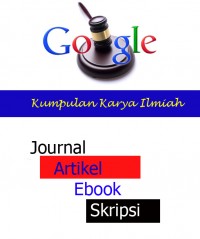Detail Cantuman

Text
EBOOK: Disaster Nursing and Emergency Preparedness
It is quite probable that at some time in the future, nurses
may be called upon to respond to a mass casualty event
or disaster outside of the hospital. Advance preparation
of our national nursing workforce for such an event is
predicted on the belief that mastery of the knowledge and
skills needed to respond appropriately to such an event
can improve patient outcomes.
I wrote these words in the spring of 2002 as I finished
the summary section of chapter 9 (p. 199) in the
first edition of this book—3 1/2 years before Hurricane
Katrina would wreak its devastation on the communities
of the Gulf Coast. When the first edition of the
book was released, our country was still reeling from the
9/11 attacks and fearful of another outbreak of anthrax.
These two events had resulted in an immediate awareness
of our lack of national emergency preparedness and
heightened vulnerability to disaster events. Health care
providers were barraged by an onslaught of information
from numerous sources (of varying quality) regarding
topics such as disaster planning and response, biological
agents, hazardous materials accidents, the dangers
of radiation, therapeutics, and so forth. Resources on
the Internet alone had increased exponentially. My own
research on these topics had revealed that the existing
disaster textbooks were written by and for physicians
and public health officials. There was a major gap in the
literature for nurses. Given the approximately 2.7 million
nurses in this country, I found this to be not only
unacceptable but a major threat to population health
outcomes. Therefore, the genesis of the book was the desire
to fill this gap in the literature and to provide nurses
with a comprehensive resource that was evidence based
whenever possible, and broad in scope and deep in detail.
Wewere very successful and the first editionwas extremelywell
received, garnering an AJN Book of the Year
award along with multiple additional accolades, and for
that I am eternally grateful. The book is currently being
used nationwide by universities and schools of nursing,
hospitals, public health departments, and multiple other
sites where nurses work.
The second edition of this textbook has an equally
ambitious goal—to once again provide nurses and nurse
practitioners with the most current, valid, and reliable
information available for them to acquire the knowledge
and skill set they will need to keep themselves, their patients,
and families safe during any disaster event. Once
again, we have held ourselves to the highest standards
possible. Every chapter in the book has been researched,
reviewed by experts, and matched to the highest standards
for preparing health professions’ students for terrorism,
disaster events, and public health emergencies.
The framework of the book is consistent with the
United States National Response Plan, the National Incident
Management System, and is based on the Centers
for Disease Control and Prevention’s (CDC) Competencies
for public health preparedness and the CDC
Guidelines for response to chemical, biological, and radiological
events. This textbook will provide nurses with
a heightened awareness for disasters and mass casualty
incidents, a solid foundation of knowledge (educational
competencies) and a tool box of skills (occupational
competencies) to respond in a timely and appropriate
manner.
Since September 11, 2001, our national concerns for
the health and safety of our citizens has expanded to
include additional hazards such as emerging infectious
diseases (SARS, West Nile virus, avian influenza), the
detonation of major explosive devices, and the use of
nuclear weapons by countries unfriendly to the United
States.We possess a heightened awareness of the forces
of Mother Nature and the health impact on communities
affected by natural disasters. We continue to face a
growing national shortage of nurses and nurse educators,
a health care system that is severely stressed financially,
and emergency departments that are functioning
in disaster mode on a daily basis.We have reason to believe
that these challenges for the profession will only
intensify in the coming years. Nurses are challenged to
be prepared for all hazards—to plan for pandemic influenza,
chemical, biological, radiological/nuclear, and
explosive (CBRNE) events, mass casualty incidents involving
major burns, and surge capacity to accommodate
a sudden influx of hundreds, possibly thousands, of
patients. In response to these concerns and the requests
of nurses across the country, I have added several new
chapters in the second edition that serve to strengthen
the health systems focus of the book and to add a strong
clinical presence.
Ketersediaan
Tidak ada salinan data
Informasi Detil
| Judul Seri |
Untuk Baca FULL TEXT di Perpustakaan FKIK UINAM
|
|---|---|
| No. Panggil |
EBOOK
|
| Penerbit | : ., |
| Deskripsi Fisik |
-
|
| Bahasa |
English
|
| ISBN/ISSN |
-
|
| Klasifikasi |
NONE
|
| Tipe Isi |
-
|
| Tipe Media |
-
|
| Tipe Pembawa |
-
|
| Edisi |
-
|
| Subyek |
-
|
| Info Detil Spesifik |
-
|
| Pernyataan Tanggungjawab |
Nur Fitriani
|
Versi lain/terkait
Tidak tersedia versi lain
Informasi
DETAIL CANTUMAN
Kembali ke sebelumnyaXML DetailCite this

Perpustakaan Fakultas Kedokteran dan Ilmu Kesehatan
Lorem ipsum dolor sit amet, consectetur adipiscing elit. Duis nec cursus mauris. Nullam vel nunc quis ipsum laoreet interdum. Maecenas aliquet nec velit in consequat.
Info selengkapnya







